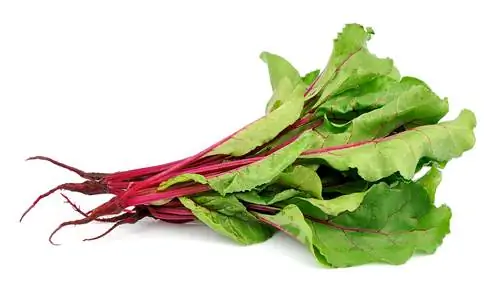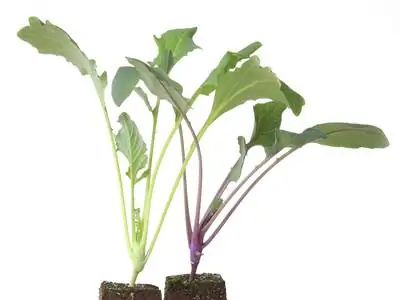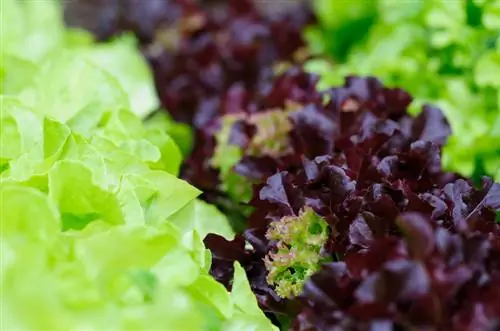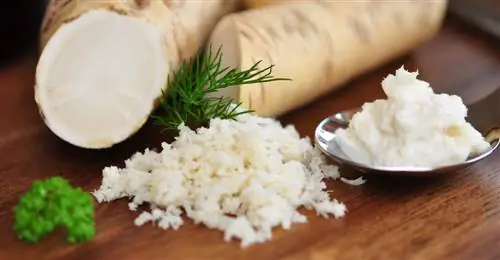- Author admin [email protected].
- Public 2023-12-16 16:46.
- Last modified 2025-01-23 11:22.
There are yellow and red-stemmed chard varieties that are a real eye-catcher in the garden bed. The leafy vegetables are very popular because of their ingredients. But hardly any hobby gardener knows about the fact that the roots were also used.
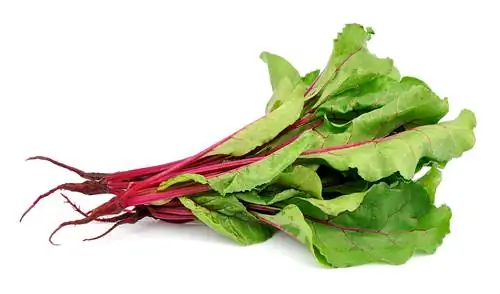
Can you eat chard roots?
Swiss chard roots are theoretically edible, contain no toxic ingredients and have a sweet taste. However, they are rarely eaten because they are very woody and fibrous, even after long cooking times.
Using the root
Swiss chard roots have been used in the past because they contain a lot of sugar. People boiled the turnip in water to get the sweet substance. Over time, the plant was replaced by fodder beet, which is also known as mangle root or beet chard.
Edibility
The root tubers, which are reminiscent of beetroot because of their species, are theoretically edible. They do not contain any toxic ingredients and have a sweet taste with a slightly bitter and bland note. Nevertheless, chard is only grown as a leafy vegetable because the beets are highly woody and do not lose their fibrous consistency through longer cooking times.
How to plant chard
Chard is easy to grow. If you take the needs of the crop into account, it will thank you with a rich harvest after ten to twelve weeks. As a medium-eater, the vegetable requires little care. Ideal planting partners in mixed culture are peas or bush and broad beans.
Location and soil requirements
Beta vulgaris subsp. vulgaris is a leafy vegetable whose leaf mass requires an adequate water supply. Deep, humus-rich soils that ensure a balanced supply of nutrients provide an ideal growth basis. Before planting, it is recommended to loosen the substrate well and improve it with compost (€43.00 on Amazon). When it comes to lighting conditions, the beet prefers sunny conditions. The crop thrives less in partial shade.
Sowing
From mid-April, the seeds are sown directly outdoors at a depth of two centimeters. If you sow earlier, you must protect the bed from the cold with a fleece covering. Leaf chard is sown in rows and requires a distance of 30 centimeters, while for stem chard you need to allow for at least 40 centimeters of distance between the plants. If the young plants are too close, remove weak specimens.
Harvest
Depending on the sowing date chosen, harvesting begins in June. To do this, work from the outside in and cut or break off the petioles at the base. There should be about five centimeters left from the stem, because this way you protect the heart and the chard can continue to grow. Young leaves measuring ten centimeters in size have a mild taste and a delicate consistency. The older the foliage gets, the stronger the leaf tissue is.
Storage instructions:
- fresh leaves wrapped in a damp cloth can be stored in the refrigerator for two days
- complete chard plant lasts longer
- washed crop is suitable for freezing
Tip
The large leaves can be used like savoy cabbage. Chard wraps taste delicious with a creamy mushroom filling.

